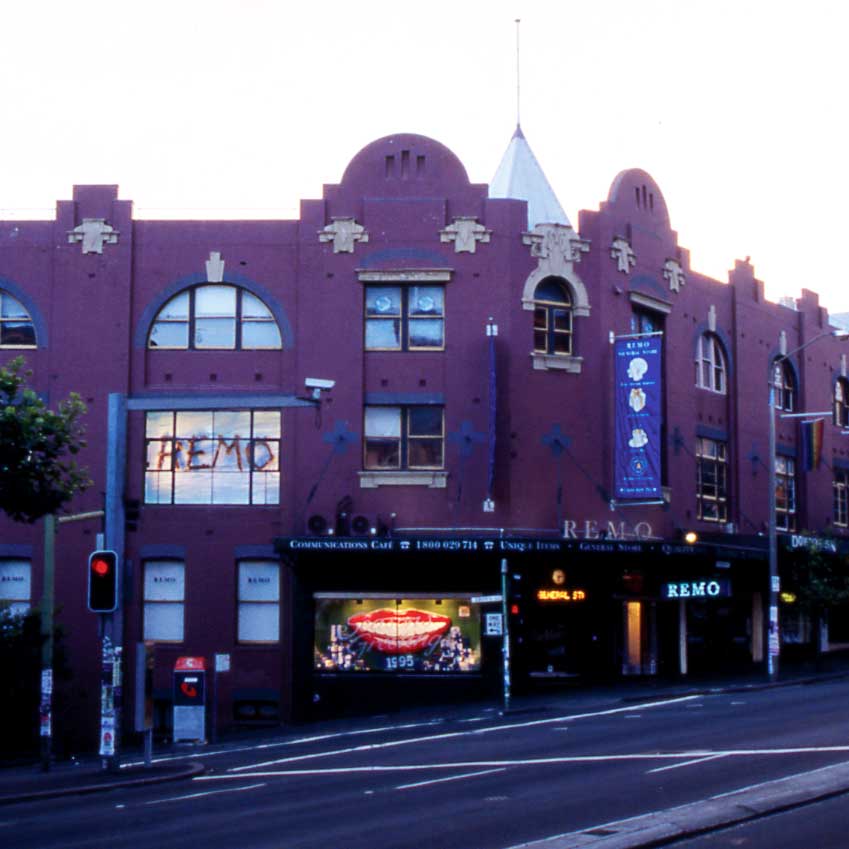The original REMO General Store was located in a gracious old Victorian building located at the corner of Crown and Oxford Streets in Sydney’s Darlinghurst. There was a window display on Oxford Street in which we would typically feature merchandise. That was for the benefit of the people on foot.
The main game, however, was a five-metre-long window on Crown Street: highly visible to people walking east up Oxford Street; but, more importantly, to the drivers and passengers of the endless stream of cars and buses making their way along Oxford Street. And also down the one-way Crown Street, heading north via the Sydney Harbour Bridge.

Put simply, this was an extraordinarily visible corner, and we were determined to use the exposure to the maximum degree possible. We decided to take a very broad brush and graphic approach to the window displays.
Phillip Parr, the sign writer we were working with, became skilled at the transformation of ideas scrawled onto napkins and bits of paper into bright gleaming installations.
Set out below are a tiny selection of Crown Street Windows from the years 1988 to 1994.
Some of them were kinetic. The green Ho, Ho, Ho’s from Christmas 1989 rollicked up and down against a red background. The giant gold fob watch from December 1993 swung back and forth against a spiraling red and green background with frosted lettering on the glass that suggested to the duly hypnotised that they buy all of their gifts at REMO.
The most memorable window happened in November 1990 when we installed an original Martin Sharp Eternity mural, in memory of “Mr Eternity” Arthur Stace.
People were very fond of our Crown Street Windows, and they became an iconic addition to the culture and streetscape of Sydney. So much so (and even we find it hard to believe this in retrospect), we were actually able to convince Telecom, the then Government-owned telecommunications provider, to move a phone box a few metres down the hill so that the visual frame of the window could be uninterrupted for the people and cars travelling up Oxford Street. (We would love to have seen the justification given for that work order.)
The window installations were also a very effective use of scarce marketing resources. The actual displays didn’t cost that much (typically a couple of hundred dollars), and so we could change them every two or three weeks. The biggest cost was the creative one, as the pressure was always on to come up with something visually appealing and worthy enough for all of our smart CustOMERs.













































































































